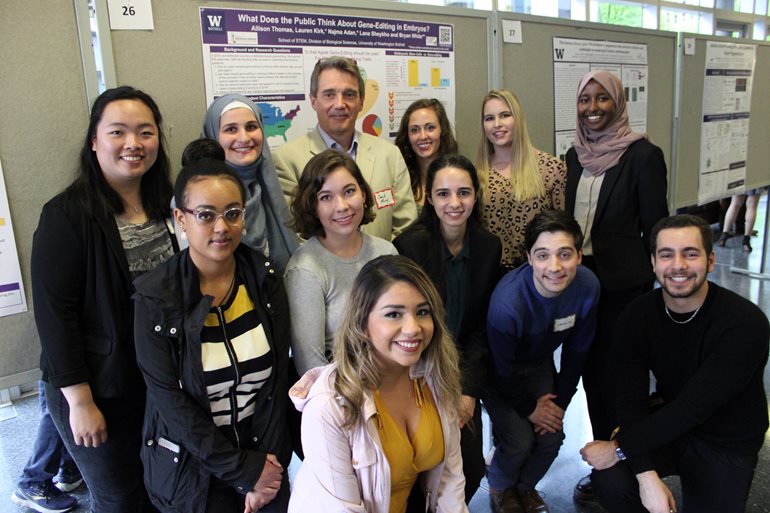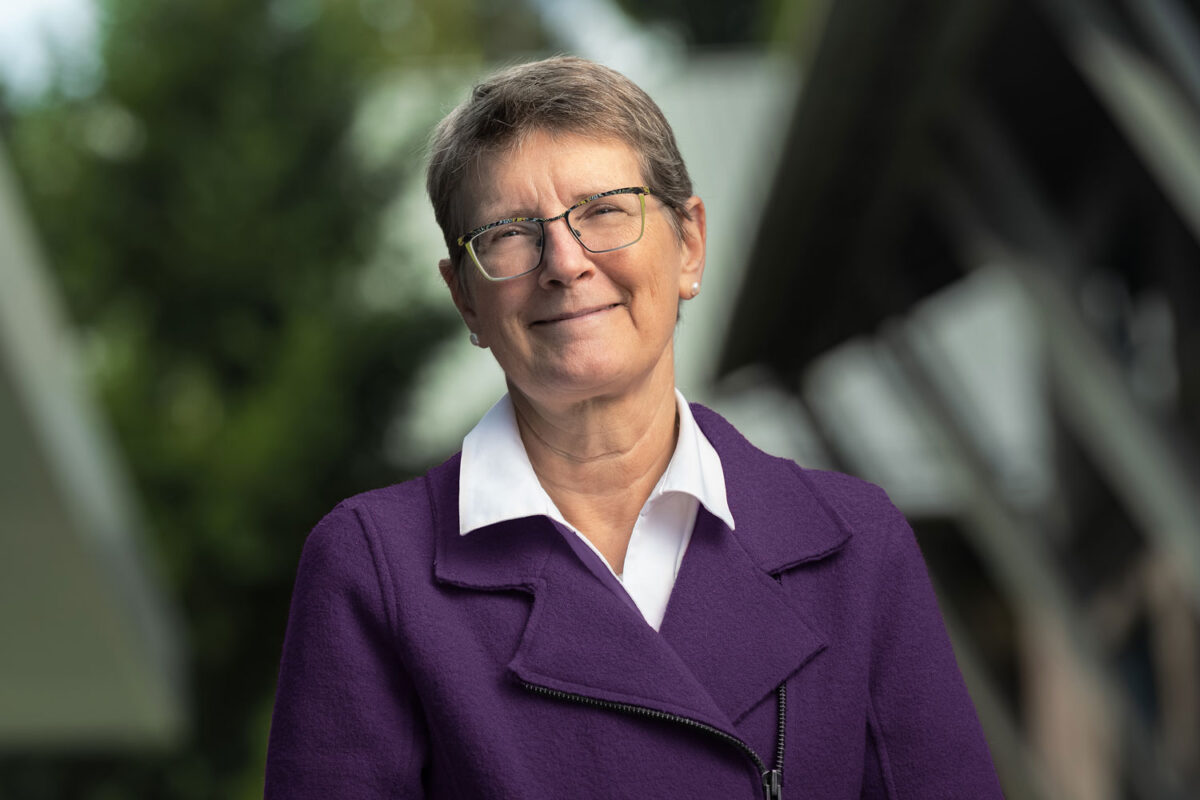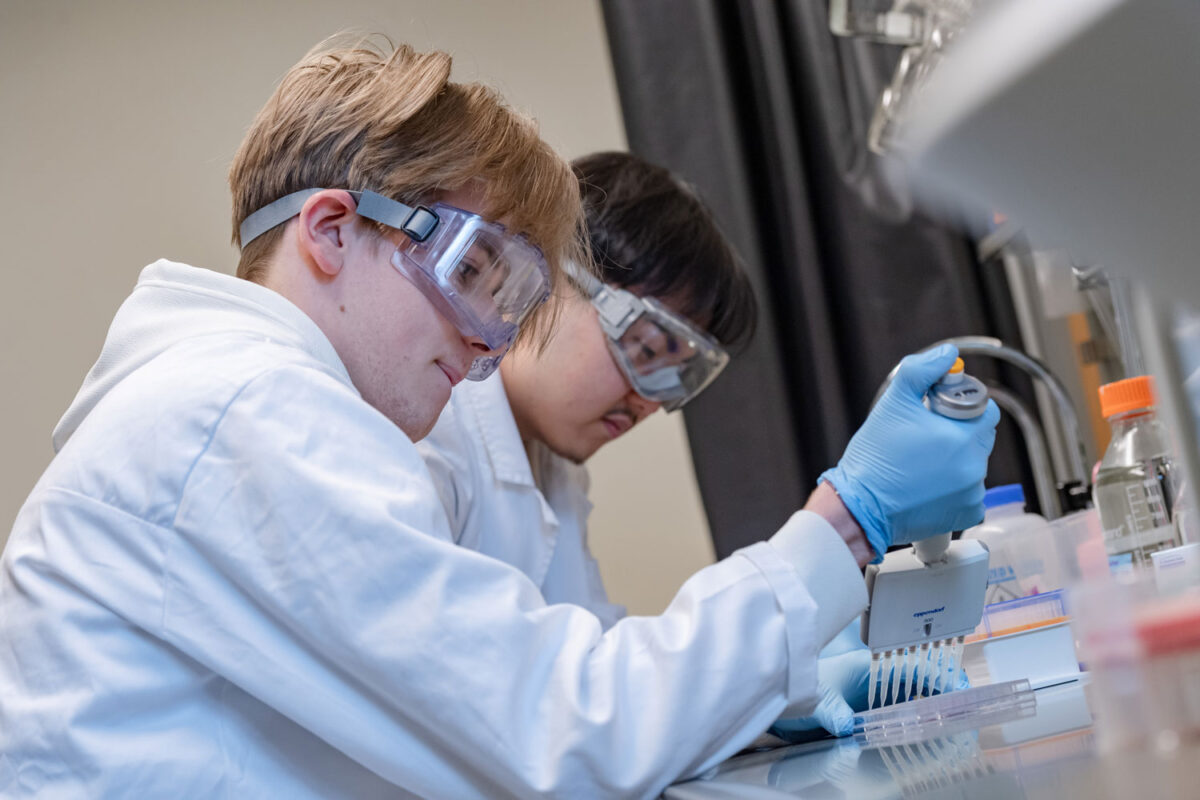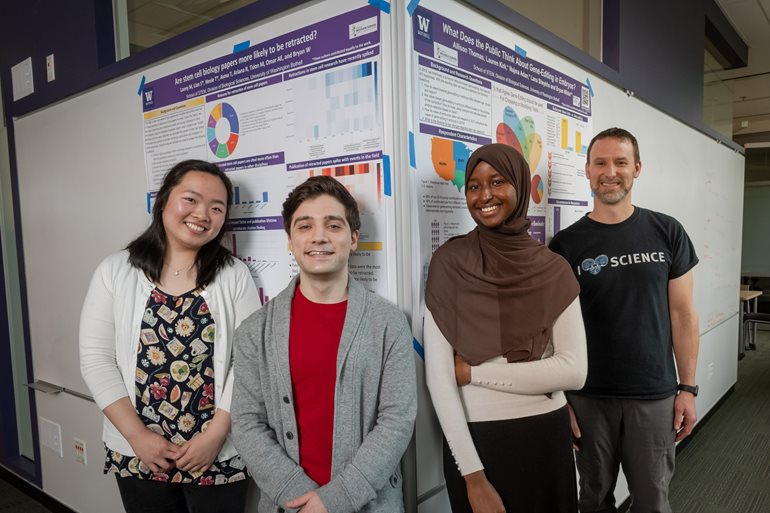
By Douglas Esser
Eleven University of Washington Bothell undergraduates worked through spring break on research they presented at the Institute for Stem Cell and Regenerative Medicine (ISCRM).
The effort was rewarded, as their two research posters stood out at an April 5 conference at ISCRM, which is located at UW Medicine’s research complex on Seattle’s South Lake Union.
One of the speakers at the event gave a shoutout to the students who surveyed public opinion of gene editing because it can affect researchers’ work. The other poster, about retracted research, was judged among the top three of the 45 presented.
Most of the posters were the work of graduate or post-doctorate researchers on stem cell science.
Research connections
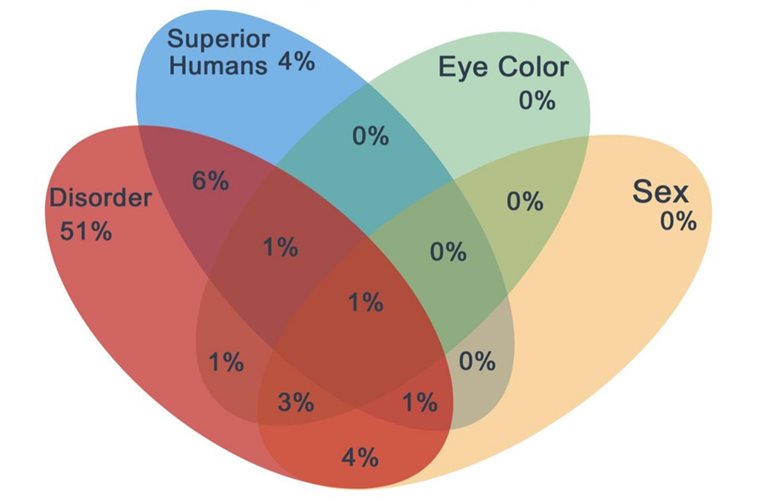
Charles E. Murry, the director of the ISCRM, said the UW Bothell students made important contributions.
“The students were bright, engaged and full of potential. We look forward to further interactions with UW Bothell,” Murry said.
Their research evolved from information covered in a stem cell class taught by Bryan White. He’s a senior lecturer in the Division of Biological Sciences in the School of Science, Technology, Engineering & Mathematics. White conducted his doctoral research at the ISCRM and now takes UW Bothell students there to hear world-renowned speakers and see the latest stem cell research underway at the ISCRM labs.
The ISCRM was founded in 2006, building on the regions’ reputation as a global leader in stem cell research. Stem cells, which have the potential to develop into different cells in the body, hold the promise of new medical treatments. Last year, a doctor in China was censured after he said he was the first in the world to genetically engineer human embryos. White’s students were on top of that news and also took advantage of a newly released database of retracted scientific papers.
Engaged students
The students who surveyed public opinion about gene editing are Allison Thomas, Lauren Kirk, Najma Adan and Lana Sheykho. The students who analyzed the retraction of stem cell papers are Lanny McCanta, Lian Sun, Neele Thom, Asma Tadmori, Ariana Ramirez, Tsion Melesse and Omar Al-Ekaili.
Adan, a Biology major working to graduate in spring 2020, said that comparing a 2019 survey with one from 2010 indicated that public support for stem cell research and gene editing remained favorable, especially with the prospect of preventing genetic disorders. Adan, who plans to attend medical school, said, “I can see myself doing some sort of research in the future.”
During their winter quarter class, students learned that one of the papers they had studied had been retracted. So that led them to look at other retractions. Published papers are withdrawn from journals for problems that include the discovery of errors and in some cases falsification or plagiarism.
Learning with a future
Two members of that team are McCanta, a fifth-year applying to medical school, and Sun, a senior graduating in June, who also plans to attend medical school.
They found that the number of retracted stem cell papers is not as high as some other fields, but they also found a tendency for the papers to be cited by other researchers before they were retracted. That highlights the risk of the fast-moving field moving in the wrong direction.
McCanta, who has done research work in a lab before, said this was the first time he had more overall say in the process. “We were responsible for finding the data and analyzing it to present,” McCanta said.
For Sun, conducting the research and seeing how it fit with the other presentations at the ISCRM was a new experience. “I feel like that’s something that could be incorporated into our practices in the future,” Sun said.
Motivated by breaking news from China and a new database, UW Bothell students kept working past the end of winter quarter. By concentrating their efforts, they were able to complete their research in two weeks, incorporating Venn diagrams and heat map graphs to illustrate their findings.
“Some people do a lot of different things during spring break,” White said. “These students chose to spend their spring break doing research up to 50 hours a week.”
